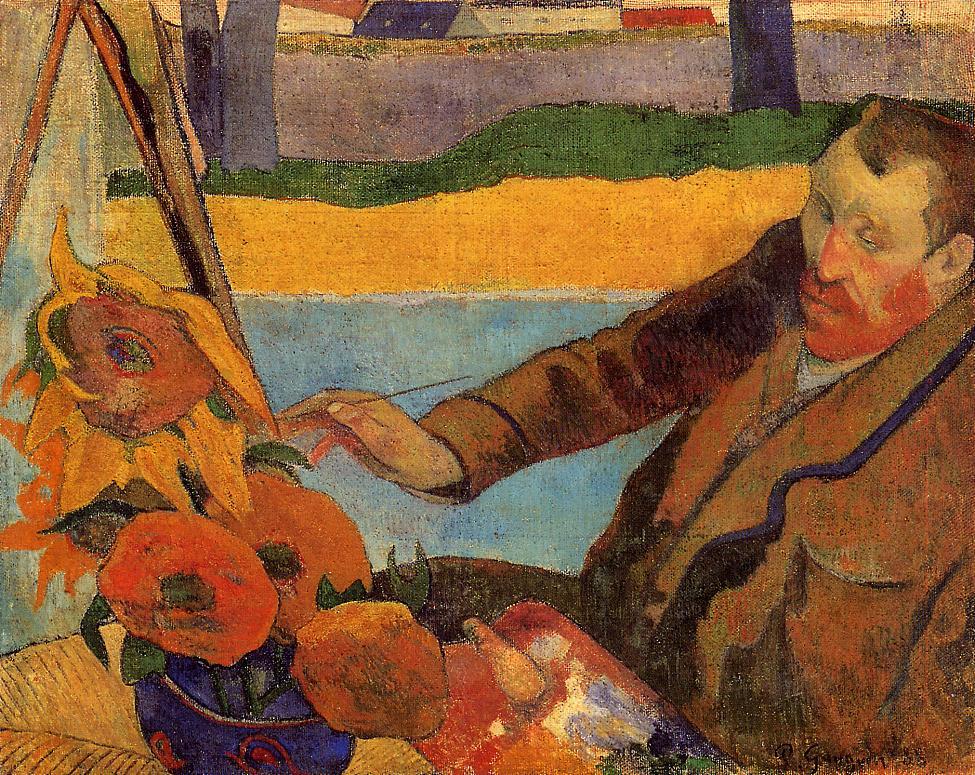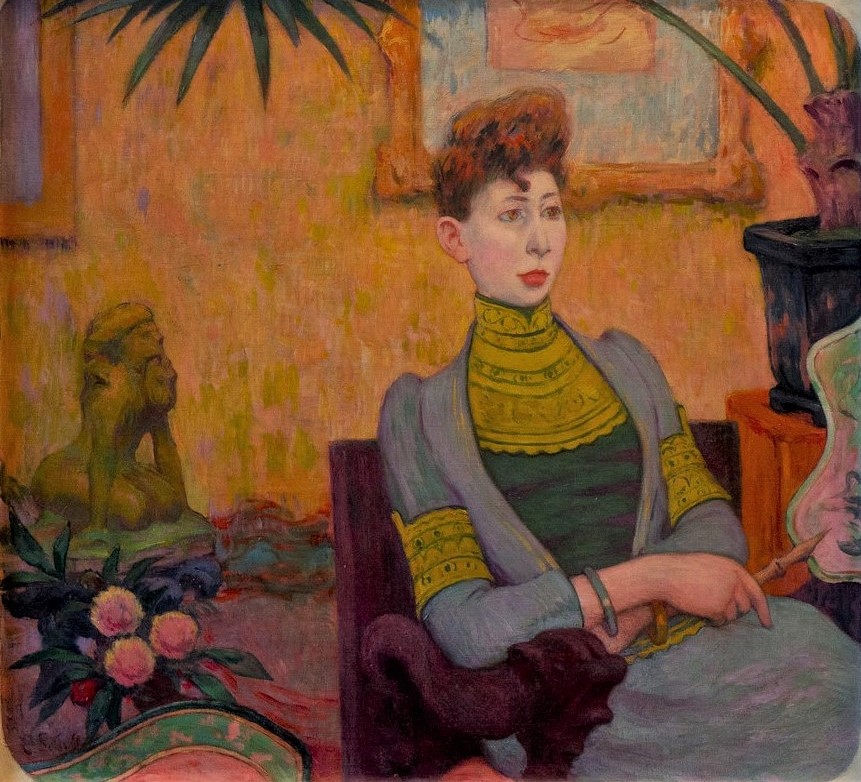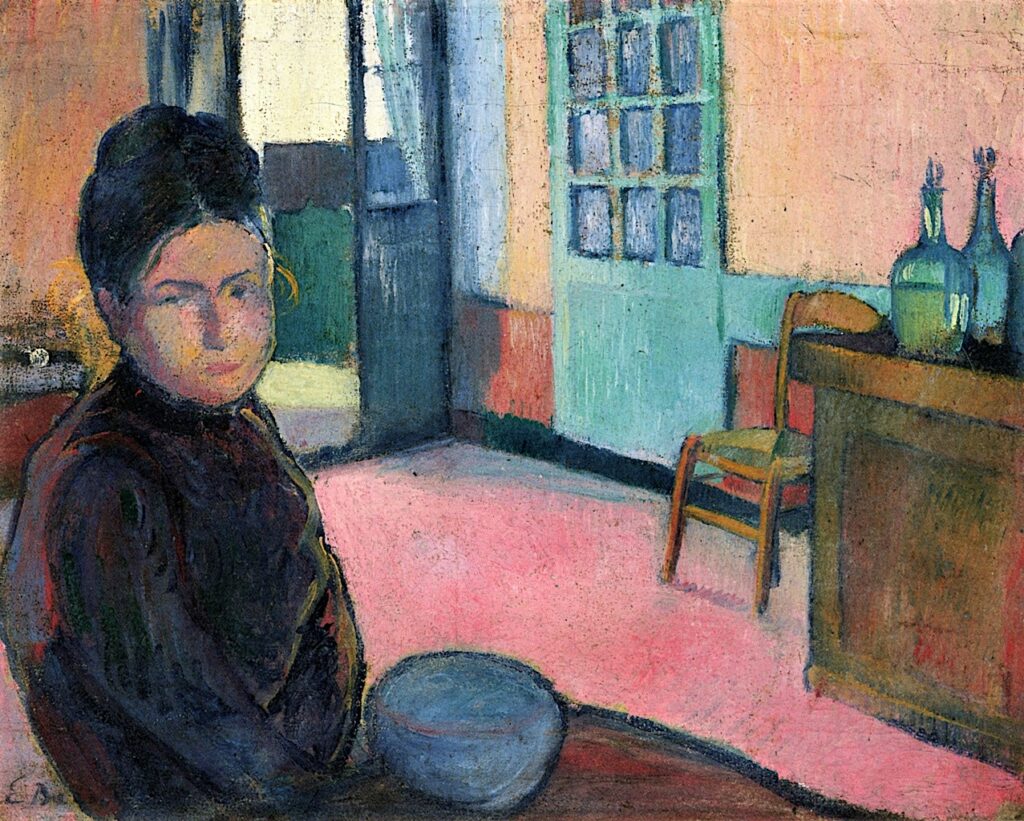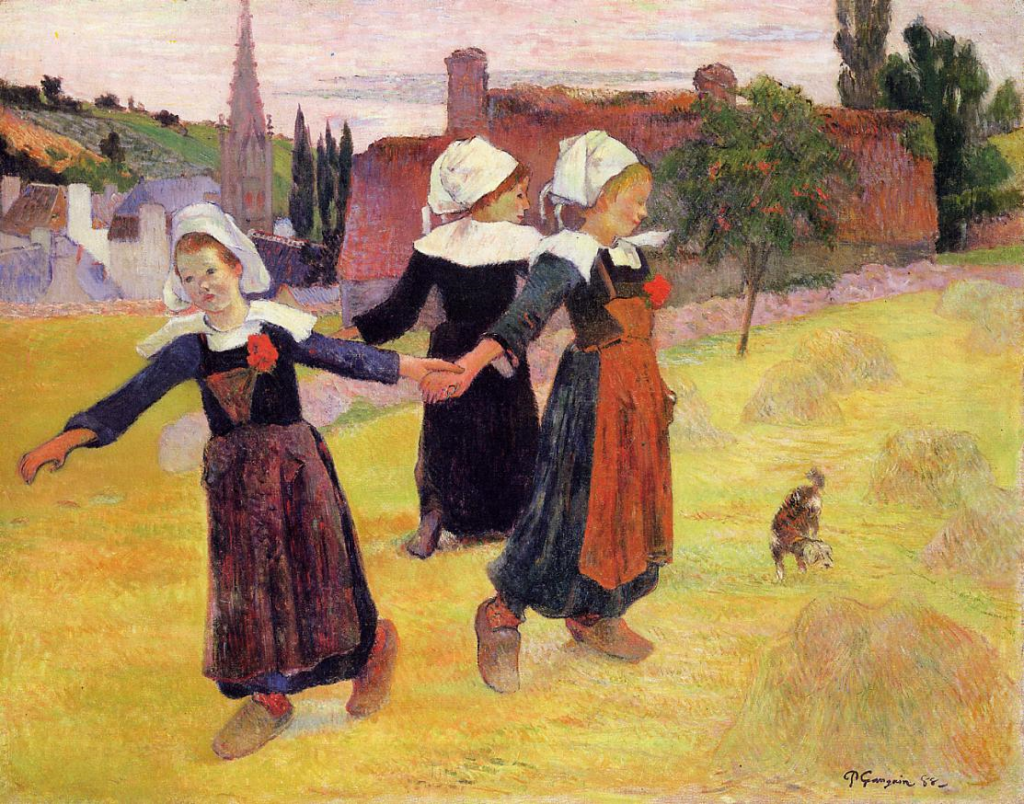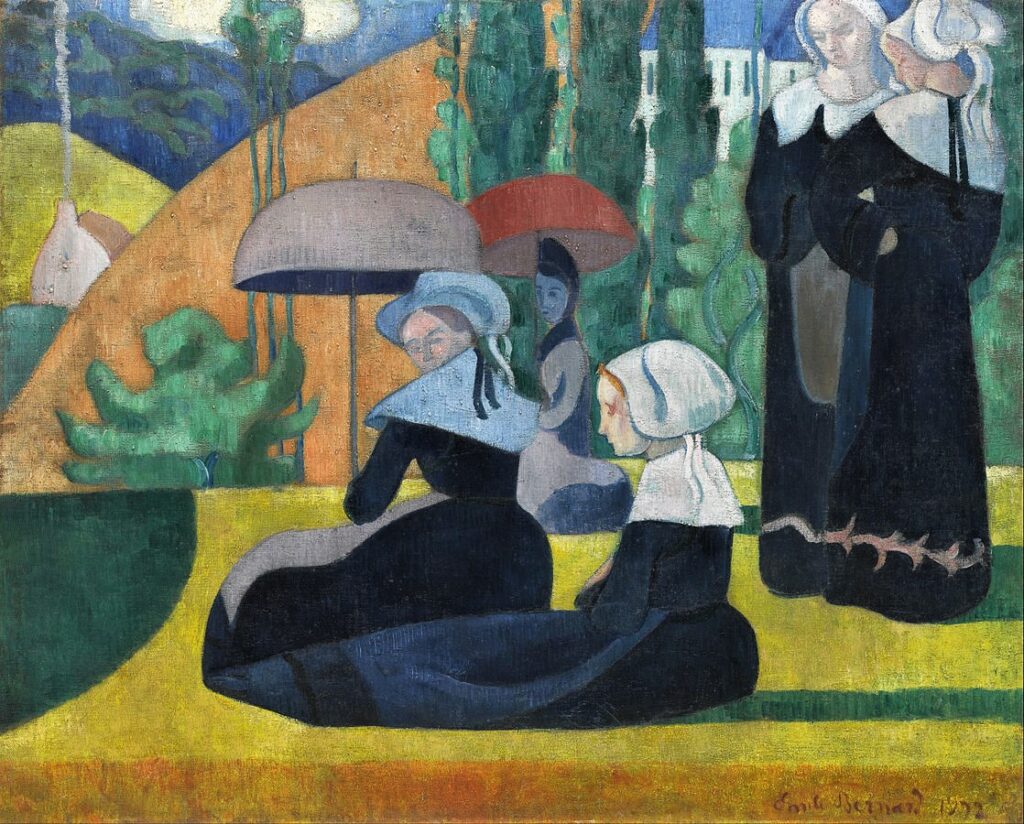Post-Impressionism
Synthetism
a symbolist art-movement
Synthetism:
Art-historian agree that Synthetism developed in the mutual inspiration between Paul Gauguin and Émile Bernard in the late summer of 1888 in Pont-Aven. The problem is that afterwards the terms Synthetism and Symbolism are intertwined by Aurier, Bernard and Denis*. That makes it hard to discern these two art-movements. Crussard amply uses these sources while describing Synthetism (R181II,p465-469). Also the Web Gallery of Impressionism (=WGI) uses the same source of Aurier (1891/03*) to describe Synthetism as well as Symbolism. Other sources see Synthetism and Cloisonnism as synonyms (R170,p104).
Around 1888/08/13 Émile Bernard arrived in Pont-Aven and he and Gauguin spent all there time together. Meanwhile they had an intense correspondence with Vincent van Gogh. (R181II,p429-431;R36,p14). In this exchange of ideas Emile Bernard and Gauguin developed the ‘synthetic symbolism’, in short Synthetism (R36,p14;R49). They absorbed the principles of Cloisonnism and gave it a much deeper significance (R181II,p465). The most important paintings of Gauguin, in which he first used this technique is the Vision of the Sermon↑ (R181,CR308) and Three little dogs** (R181,CR311). He was clearly inspired by works of Émile Bernard like Breton woman in the meadow** (R181II,p458) Maybe Bernard’s Buckwheat harvesters** again was inspired by Gauguin’s Vision of the Sermon (R181II,p487), but Gauguin had completed it only in the second week of November (R181,p616). Gauguin and Bernard were also inspired by Cézanne and his abondoning of the classical perspective (R181II,p459+438).
The characteristics I now will render, mostly also can apply on Symbolism. Aurier (1891*) stated that a work of art should be: 1. idealistic, 2. symbolic, 3. synthetic, 4. subjectiv and 5. decorative (iR22).
Aurier (1893*) wrote that the work of art was born of ’the synthesis of two souls, the soul of the artist and the soul of nature’ (R181II,p465). A painting was meant to synthesize the artist’s impressions and memories (iR22), to synthesize the perceived and artistically presented world (R172,p81). Rotonchamp defined synthesis as ‘an intentional simplification of line, forms and colours in order to give maximum expressive intensity’ (iR22). Gauguin wrote (1889/11/08) ‘In this order of abstract ideas I am driven to seek synthetic colour and form.’ (R181II,p467)
Synthetism was no longer concerned with external appearances and rejected the traditional rendering of form, light and space. It wanted to render ’the intimate reality, the essence of the object’ (Dujardin, 1888*), the Platonic Ideas hidden behind the appearances, the Ideas that are the ‘symbolic correspondents’ of the spiritual reality (Aurier*). This essence, the Idea of an object had to be represented by a ‘sign’ (Aurier, 1891*), a ‘schema’ or ‘style’ (Bernard, 1919*), ‘abstract’, ‘suggestive’ and ‘symbolic’ (Gauguin and Van Gogh). Aurier (1891*) wrote that an art-work is ‘Ideeistisch’, because ‘his only ideal was to express the Idea’ (R49,p45;R181II,p628). They gave up the painting en-plein-air; emphasized the role of memory and reinterpretation, to discover the structures of the object (R49). Bernard wrote ‘Because an idea consists of things collected by the imagination, a painter should not paint the object in front of him, but should seek to recapture it in the mental image he has collected, for the memory does not retain everything, only what is striking.’ (iR22) Bernard also wrote that he intended to render ’the invisible sense hidden beneath the mute external form’ (R181II,p465). Gauguin wrote in a letter to Schuffenecker (1888/08/14) ‘Don’t copy too much from nature – art is an abstraction’ and adviced him to dream and create (R181II,p469).
Synthetism abolished depth and used simplified and decorative forms. Gauguin refrained from modelling shadows and put bright areas of colour next to each other (R172,p81). As Denis put it, a picture is seen as ‘a flat surface covered with colours assembled in a certain order’ (R181II,p468). Caracteristics of Synthetism are: the use of outlined areas of colour; deforming line; the use of arabesques and ornamentel plants; simplified forms; abstraction of the motif; decorative rhythm; no transition of tones of colour; large areas of iridescent colours; no rendering of atmosphere; the absence of depth; absence of horizon; a simplification; return to the archaic (R181II,p465-468;iR4)
‘Synthetism is a primitivising mystical vision implying belief in a transcendent world.’ (R181II,p466) Bernard stated that Symbolism was essentially Christian, Denis also emphasized ‘Christian values’. Fénéon, on the other hand reviewed in 1889 that the work of Gauguin ‘invoked the anarchist dream’ and Gauguin was interested in ‘primitive’ art, culture and religion. Synthetism (and the Nabis) rendered primitive themes with archaic tendencies and (pseudo-)religious and medieval scenes.
Crussard sees the difference in Synthetism and Symbolism in the fact that the latter emphasizes the use of significant symbolic images (thought), whereas the first emphasizes the ‘sensory correspondence’ that evokes a ‘direct resonance in the soul’ (expressive form) (R181II,p467). She emphasizes an inward, naïef and primitive vision.
Note that the impressionist painting style renders on spot the impression of nature as he sees it. The focus is not an the essence of the object, but on the effect the light has on the colouring of the object.
Note*: see old books and articles at the bottom of the page on the symbolist art-movements.
Note**: see pictures at the page on the Pont-Aven School and on Cloisonnism.
Sources: Crussard (R181II,p465-469); See links for more info on WGI on Synthetism (iR22) and on Symbolism (iR22);
Recommanded citation: Post-Impressionism / art-movements: Synthetism. Last modified 2025/02/10. https://www.impressionism.nl/synthetism/”
Note: additional info and pictures will be added.



